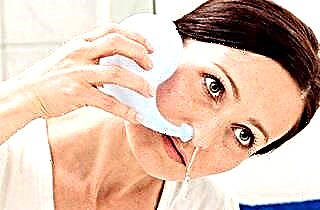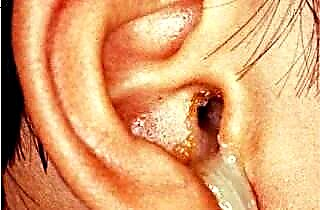Normally, a person's heart beats at a frequency of 60-90 beats per minute. In this rhythm, it manages to first fill its chambers with blood, and then push it into the vascular bed with sufficient force, the normal indicator of which is called blood pressure. Thanks to the constant work of the heart, tissues and organs located on the periphery receive the necessary nutrients and oxygen.
With changes in the frequency of contractions, the organ loses its ability to pump the required amount of blood. Cardiac arrhythmias requiring urgent care are manifested by a sudden sensation of palpitations and chest pain, darkening of the eyes, weakness, shortness of breath, and loss of consciousness.
Why can an arrhythmia attack occur?
Rhythm disturbances appear due to changes in cardiomyocytes (the working mass of the heart muscle), the conducting system (cells that establish the sequence of contractions), or due to the pathology of other systems and organs.
There are the following reasons:
- Physical overload... The untrained heart tries to supply blood to the suddenly working muscles in the limbs, which leads to natural tachycardia. In this case, it is very important to know your submaximal heart rate - a limit that you should not go beyond. At higher heart rates, the organ consumes energy irrationally, since the period of myocardial relaxation is critically reduced.
- Psychological stress... Under the influence of strong emotional experiences, biologically active substances are released that make the heart muscle contract faster. "Pressor amines" are mediators synthesized by the adrenal glands (Epinephrine, Norepinephrine, Epinephrine, Norepinephrine) that cause vasospasm, tachycardia, and fever. During the day, their concentrations change, just like a person's mood.
- Abuse of bad habits and stimulants (nicotine, alcohol, tea and coffee) significantly changes the heart rate. Different substances affect the frequency of contractions in different ways. In any of the cases, it is strongly recommended to avoid bad habits because of their not always predictable harm to the cardiovascular system. There are a large number of fatal arrhythmias in which it is extremely difficult to provide effective assistance to the victim, due to the lack of medical personnel nearby. The lion's share of them falls on the state of intoxication.
- Hypoxia - a decrease in the oxygen content in the blood. It occurs during prolonged stay in closed hot rooms, with a large crowd of people, the presence of respiratory diseases.
- Taking medications - glycosides, antidepressants, sympathomimetics.
- True cardiac causes: exacerbation of existing heart pathologies (ischemic disease, malformations, cardiomyopathy, arterial hypertension).
- Endocrine pathologies (thyroid dysfunction), diseases of the gastrointestinal tract.
- Idiopathic arrhythmia - occurs in the absence of a clear cause.
What to do and how to relieve symptoms?
If the condition is accompanied by fear of death, loss of consciousness, the person's condition deteriorates significantly, an ambulance must be called. Before her arrival, at the prehospital stage, it is worth adhering to the following algorithm:
- Determine the presence and nature of arrhythmiaby palpating the pulse on the carotid or peripheral arteries.
- Eliminate the influence of the factor, which provoked the arrhythmia:
- hypoxia - remove to fresh air, free from tight clothing;
- physical overload - to provide complete rest;
- psychological stress - to organize an emotionally comfortable environment, give a sedative medicine (valerian tincture - 40 drops);
- a known disease - for example, to stop the angina attack that caused the arrhythmia with "Nitroglycerin".
- Carry out medical correction of arrhythmia (performed by qualified specialists).
Clinically, you can identify:
- Atrial fibrillation (fibrillation) (chaotic excitement and contraction of the muscle fibers of this part of the heart causes irregular work of the ventricles). The main clinical symptom is the phenomenon of pulse deficit. The heart rate (determined by placing the hand on the middle third of the left lateral part of the chest) exceeds the frequency of oscillations of the arterial walls at the periphery (for counting on the inner side of the wrist, press 3-4 fingers to the radius 0.5 cm below the end of the eminence of the thumb). Atrial fibrillation requires medical correction (antiarrhythmic drugs, cardiac glycosides, calcium antagonists, beta-blockers) prescribed by a specialist after taking an electrocardiogram. Emergency care for fibrillation at the pre-medical stage is to give the victim a sedative (Valocordin, valerian), to provide comfort. You can try the hallux valgus tests described below, but their effectiveness in this case is not high.
- Ventricular fibrillation (chaotic excitement and contraction of myocardial fibers). It manifests itself as asystole - the absence of heartbeat and pulse in the peripheral (radial) and central (common carotid artery - located in the upper half of the neck, you need to slide your fingers from the Adam's apple up and to the sides) vessels.First aid: resuscitation measures... Before the ambulance arrives, press on the middle part of the sternum with straight, locked hands at a frequency of 2 times per second. In the absence of skills, you do not need to take breaths... Emergency assistance is defibrillation.
- Paroxysmal ventricular tachycardia (rhythmic heart contractions with a frequency of 140-220 per minute). The attack suddenly comes on and ends. Symptoms are sudden onset of palpitations, throbbing in the head and neck, chest tightness. Abrupt cessation gives the illusion of cardiac arrest. It is stopped by "Lidocaine", "Amiodarone".
- Paroxysmal sinus tachycardia (heart attack with a frequency of 150-240 beats per minute). It is accompanied by sweating, dry mouth, dizziness, pain in the stomach. You can help with arrhythmias at home by conducting vagal tests (their essence lies in the reflex activation of the vagus nerve, which causes bradycardia):
- squatting on toes with tension in the abdominal muscles;
- massage of the carotid sinus (at an angle of the lower jaw);
- pressure on the root of the tongue (stimulation of the gag reflex);
- imitation of a coughing fit;
- muscle tension at the height of a deep breath.
Prevention of complications
Rhythm disturbances are dangerous with the possibility of formation and separation of blood clots. The most unfavorable in this respect is atrial fibrillation.
To avoid thromboembolic complications, the following drugs are used:
- Anticoagulants (reduce blood clotting):
- with a direct mechanism of action (heparin and heparinoids);
- with indirect (derivatives of oxycoumarin and phenylindandione).
- Disaggregants (reduce the ability of platelets to stick together):
- acetylsalicylic acid (Aspirin), Clofibrate, Anturan, Dipyridamole.
The dosage regimen is selected by the attending physician based on the number of risk factors present in the patient.
Conclusions
Arrhythmia paroxysm occurs with the active use of compensatory capabilities. This happens with physical or emotional overload, exacerbation of the disease.
To relieve an attack of arrhythmia at home, you can ensure complete rest, sometimes with the use of mild sedatives.With sinus tachycardia, vagal tests will be effective, while ventricular fibrillation requires resuscitation. The diagnosis of arrhythmia is confirmed by an electrocardiogram.
Violation of blood flow can lead to the formation of a clot in the heart cavity (detected by ultrasound), its separation and thromboembolic complications. For prophylaxis, anticoagulants and antiplatelet agents ("Warfarin", "Ksarelto", "Dabigatran") are used as drugs for continuous use.



